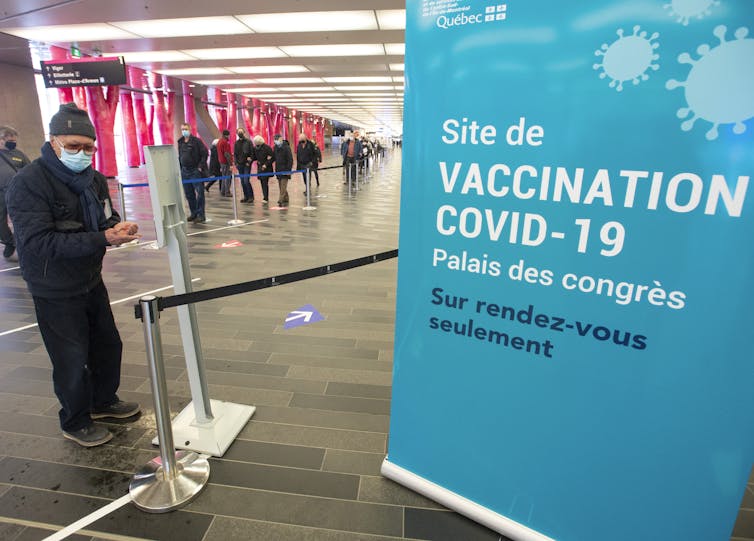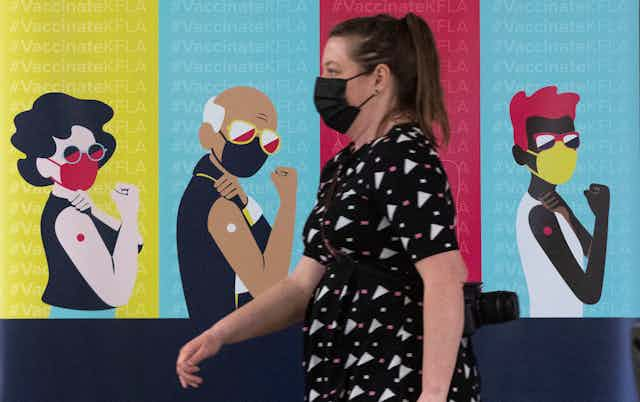Joe Vipond, a Canadian emergency room physician who was a strong supporter of masking during the pandemic, said in a speech last year that the slow recognition that COVID-19 is spread by airborne transmission resulted in what is likely “the most egregious public health error in modern history.”
The notion that governments can commit public health errors in response to a public health emergency like the COVID-19 pandemic — and that these errors can negatively impact a large number of people — has begun to receive attention from the scientific community and the popular press. Public health measures such as mask mandates, lockdowns, school closures and vaccine mandates are now widely discussed.
However, how can we investigate why governments err without understanding first what a public health error is, and is not? As a public health errors scholar, it strikes me how little research has been done on this topic, and how much confusion exists around what constitutes a public health error.
What is a public health error?
In a new paper, I clarify these issues, offer a new definition of the concept, and explain why studying errors contributes to our understanding of public health policy.

I suggest that a public health error occurs when, in retrospect, a policy choice worsens public health. This decision must either cause direct and significantly greater harm to the public or fail to effectively prevent harm, compared to other available options. Based on those criteria, there are two broad types of errors:
- Error of action. Interventions that directly caused harm to population health and were worse than doing nothing at all.
- Error of omission. Failure to take action when measures were needed to protect the health of the population.
Errors of action
Examples of the first type include public health interventions and campaigns. For instance, public health campaigns in the 1950s using low-dose radiation to treat benign illnesses (that is, not for treating cancer), such as acne and ringworm. Children and young adults treated with radiation showed an alarming tendency to develop brain tumours, thyroid cancer and other ailments as adults.
Read more: A generation of Canadian children was given radiation treatment and never warned of the cancer risks
Other examples include the approval of a faulty drug, like the drug Thalidomide prescribed to pregnant women in the 1950s and 1960s for the treatment of nausea. The drug caused irreversible fetal damage, resulting in thousands of children being born with severe congenital malformations. The painkiller Vioxx that caused heart attacks and strokes is a more recent example of an error of action.
Erroneous guidelines provide yet another example of this type of error. For example, a recommendation in the United States to give increased radiation doses to Black people compared to other populations during X-ray procedures (a practice called “race correction”).
Errors of omission
The second category of errors includes instances of inaction or cases when public health officials were not doing enough to protect the public. For example, the failure to act against the harmful effects of tobacco; the delayed action to reduce child poisoning caused by lead paint inside U.S. homes; or the time it took for government officials to respond to the elevated levels of lead found in the drinking water of residences in Flint, Mich.
Health Canada’s delayed and inadequate response to evidence of addiction and misuse associated with the opioid OxyContin is another example of an error of omission.
The question of blame
Naturally, when the public is harmed, people want someone to blame, and culpability (such as acts of negligence or carelessness) often becomes our central focus. While understandable, this approach is misguided. Instead, I strongly suggest focusing on the consequences of public health choices — and the systematic factors leading to these outcomes — rather than on blame.
Doing so (removing blame) better aligns with the goal of public health, which is to maintain and promote the health of populations. In this sense, public health errors of action or omission are contrary to this aim: causing or failing to prevent harm to the public, whether they are culpable or not.
That brings me to a possible definition of error. I define a public health error as “an action or omission, by public health officials, whose consequences for population health were substantially worse than those of an alternative that could have been chosen, regardless of the causal processes involved in the consequences.”
Back to COVID

As the COVID-19 pandemic fades, but remains a prominent public health concern, I welcome the debate about whether public health responses could have been better. I suggest we follow four simple rules, rooted in my public health errors lens to better assess our actions:
Stop focusing on blame (to err is human). Instead, assess the structural factors leading to negative outcomes, such as how science is interpreted, political pressure and decision-making procedures. After all, the goal is to improve and learn from mistakes rather than pointing out blameworthy actors. Allocating blame leads to unnecessary politicization of the process and findings.
Fight your biases and acknowledge that both the failure to act when measures were needed and the interventions in response to the virus can either cause harm or fail to prevent harm to the public.
Be humble when interpreting the evidence. It is often difficult to compare different types of harms and benefits. Our actions (or inactions) can have both short-term and long-term effects on health and beyond.
Assess the impact of our public health measures on the most vulnerable, such as marginalized communities, the poor, disabled individuals and those struggling with addiction disorders. They might be the most susceptible to the consequences of our decisions.
Moving forward, it is time to set aside our political and scientific battles so we can work together to examine our mistakes, preventing their recurrence in the future. This task is not easy and requires a thorough and transparent investigation. However, it is essential for protecting the public’s health and rebuilding trust in the medical profession.

